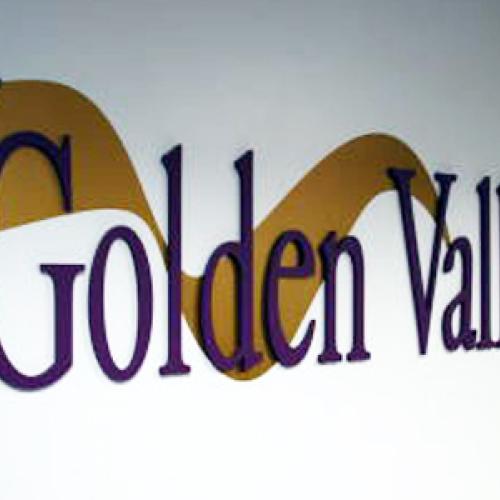The City of Golden Valley used the Minnesota B3 Benchmarking tool and energy assessments to identify opportunities for energy savings in two of its buildings. Lighting improvements were identified as cost-effective energy saving measures to pursue. The lighting retrofits are now saving the city $2,500 per year in the two buildings.
Implementation: The city replaced 224 inefficient light fixtures in the 12,500 square-foot Vehicle Maintenance Building and the 15,900 square-foot Park Maintenance Building. Most of the lighting upgrades replaced older T12 lamps and magnetic ballasts with efficient T8 lamps and electronic ballasts.
Outcomes—energy saved, CO2 reduced, increased productivity: Comparing the baseline year of 2010, before the upgrades were finalized, to 2012, when the project was completed, electric use in the Vehicle Maintenance Building decreased 15 percent. For the Park Maintenance Building, electric use decreased 20 percent. CO2 emissions were reduced by about 16 percent for both buildings. The city reports that lighting upgrades have enhanced the comfort and productivity of workers in those buildings.
The savings are shown in the B3 Benchmarking charts below. These savings represent annual savings of $1,300 and $1,250 (at current energy prices) for the Vehicle Maintenance and Park Maintenance buildings, respectively. The Minnesota B3 Benchmarking ratio for the Vehicle Maintenance Building was reduced from 105 percent before the lighting retrofit to 64 percent after, meaning it now uses about one third less energy than if it were a new building built to current energy codes. The B3 ratio for the Vehicle Maintenance Building was 27 percent, meaning it uses about one quarter less energy than if it were a new building.
Vehicle Maintenance Building (12,500 sq. ft.)
Annual Electrical Consumption

Figure 1. This Minnesota B3 Benchmarking chart shows electrical savings decreased 15 percent for the Vehicle Maintenance Building.
Annual CO2 Emissions

Figure 2. CO2 emissions were reduced by 17 percent.
Park Maintenance Building (15,900 sq. ft.)
Annual Electrical Consumption

Figure 3. The electrical use for the Park Maintenance Building decreased 20 percent from 2010 to 2012.
Annual CO2 Emissions

Figure 4. CO2 emission decreased by 16 percent.
Documenting results: Golden Valley is able to quantify its savings via Minnesota B3 Benchmarking. The Minnesota B3 Benchmarking tool is available for all state, local government, and public school buildings. It allows users to track their buildings’ energy use, monitor the performance of energy improvements, and allow building portfolio managers to readily identify poor energy performance. To add your building to this database, go to the B3 website and click on “Contact Us.”
Funding: The upgrades were funded by a $19,600 Energy Efficiency and Conservation Block Grant from the Minnesota Department of Commerce and U.S. Department of Energy. The grant was provided by the American Recovery and Reinvestment Act of 2009, the federal stimulus program designed to save energy and create jobs. A rebate from Xcel Energy also helped fund the upgrades. Total cost for the building upgrades: $29,700. The projects will pay for themselves via energy savings in about 12 years.
With the national phase out of magnetic ballasts and T12 lamps, Minnesota utilities no longer offer rebates for converting such lighting systems. However, with rising demand and energy charges for commercial consumers, companies that still have these in place may find it cost-effective to replace them even without rebates. Most electric utilities have rebates to support change outs of many other kinds of lighting efficiency improvements.
Resources for local government projects: Public institutions seeking energy efficiency improvements are encouraged to consult with the Minnesota Department of Commerce, Division of Energy Resources (DER) and their local gas or electric utility. DER provides technical support to local government units, state agencies, school districts, and institutions of higher learning that are seeking energy efficiency and renewable energy measures. Contact DER to discuss which of its energy efficiency programs can be of help.
Utilities in Minnesota are mandated to achieve an annual energy savings of 1.5 percent of annual retail energy sales. Utility representatives can help assess opportunities for efficiency and identify what rebates may help finance projects.
The U.S. Department of Energy’s Building Technologies Office also provides helpful resources for building retrofits. For more on energy efficiency, including information on B3 Benchmarking, contact the DER Energy Information Center.
View the original post on the MN Department of Commerce website.
About the Local Government Energy Action Series:
This year-long effort tells the stories of nearly 50 Minnesota municipalities, counties, and schools and the tangible results of their energy-saving efforts to inspire others to take their own actions.
Local Government Energy Action is brought to you by the Clean Energy Resource Teams (CERTs) in partnership with the Minnesota Department of Commerce, Division of Energy Resource


